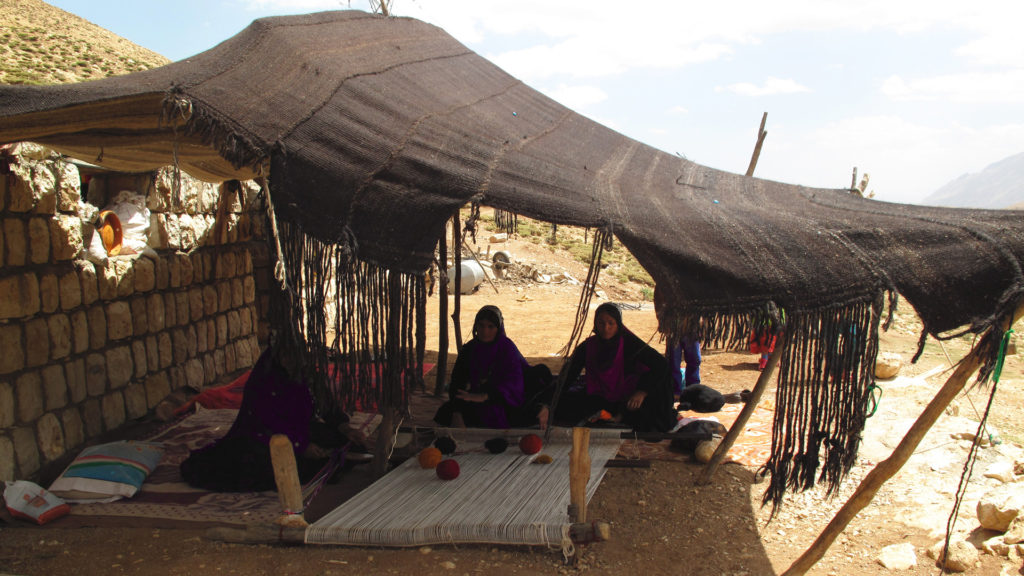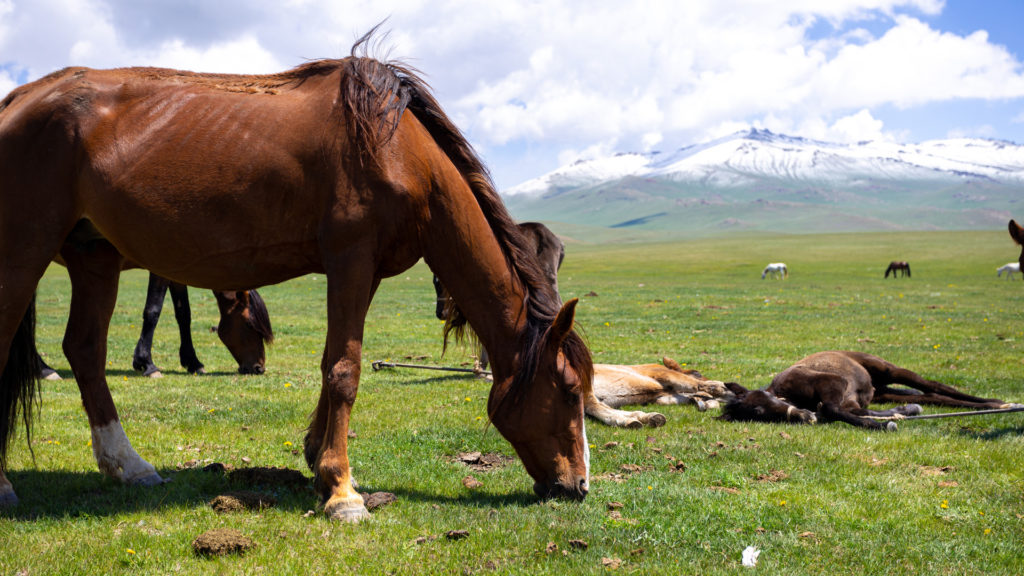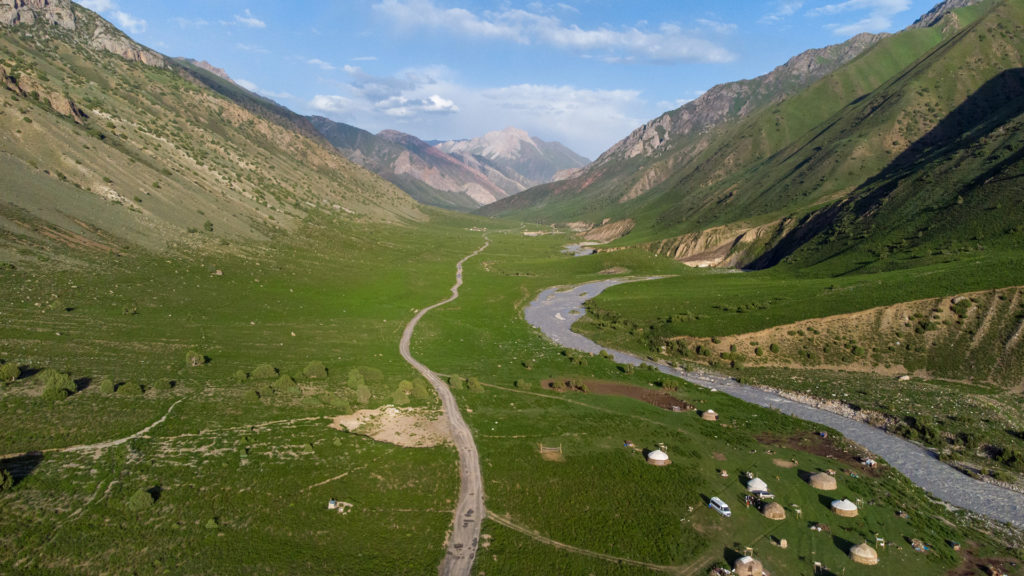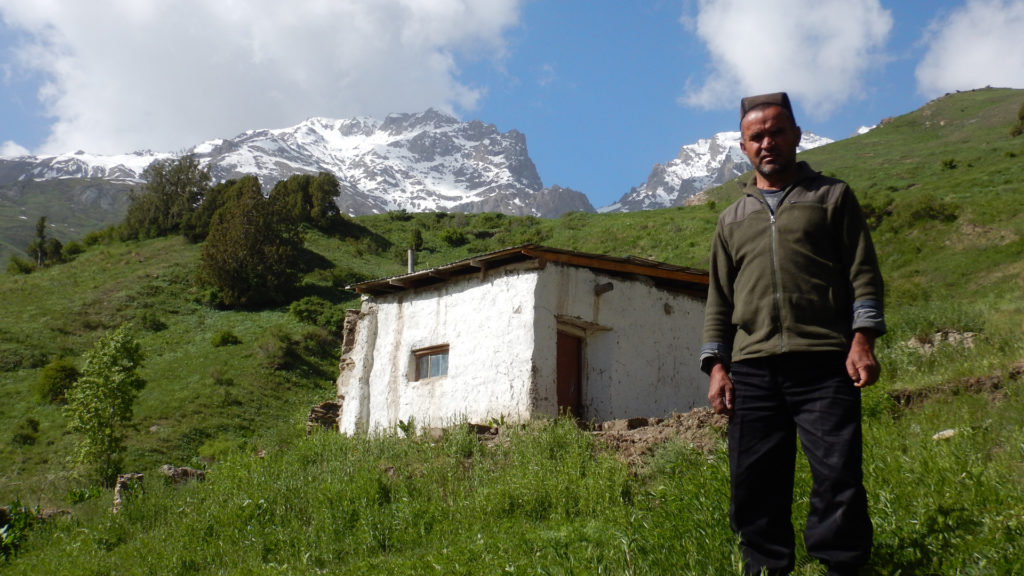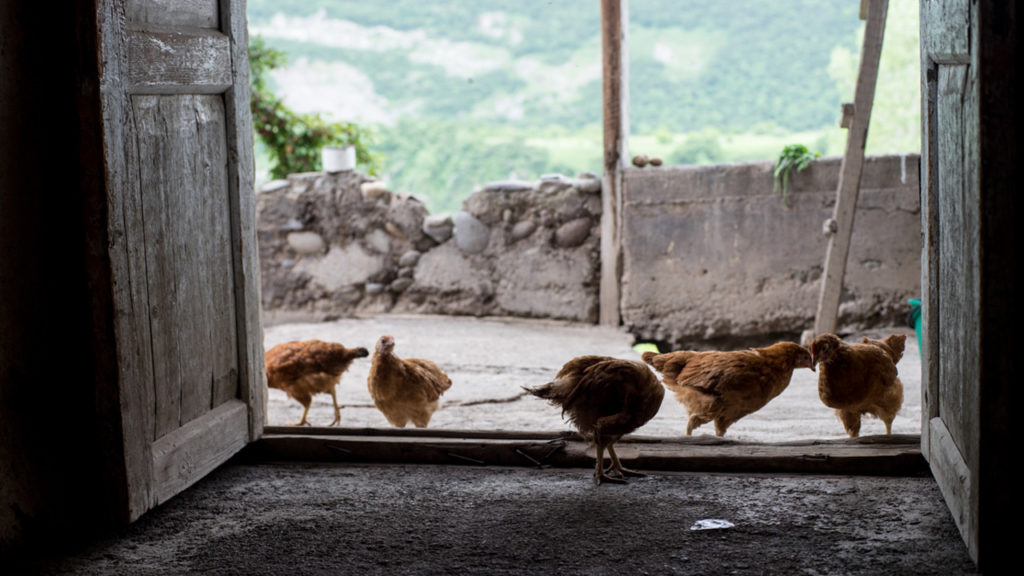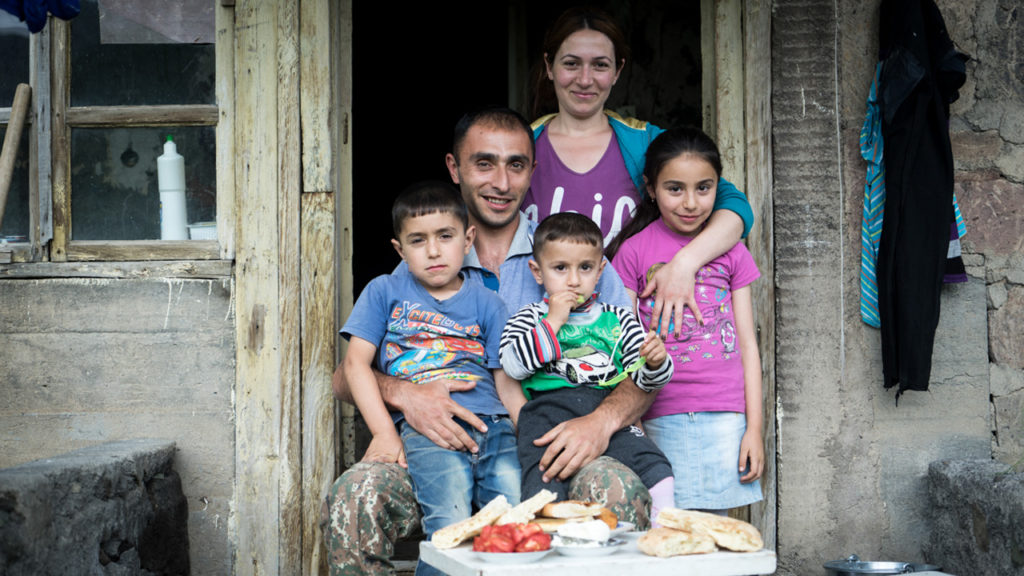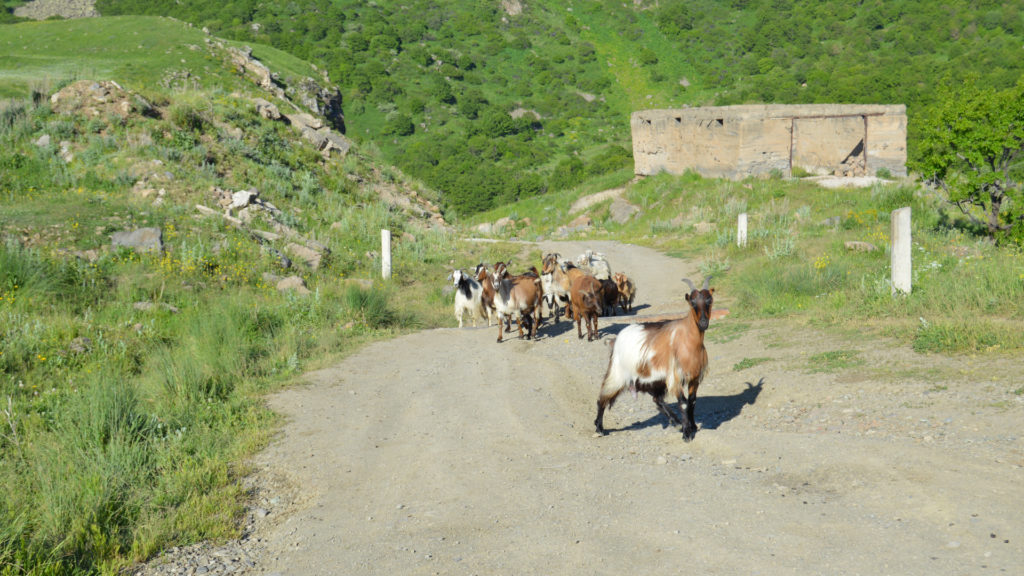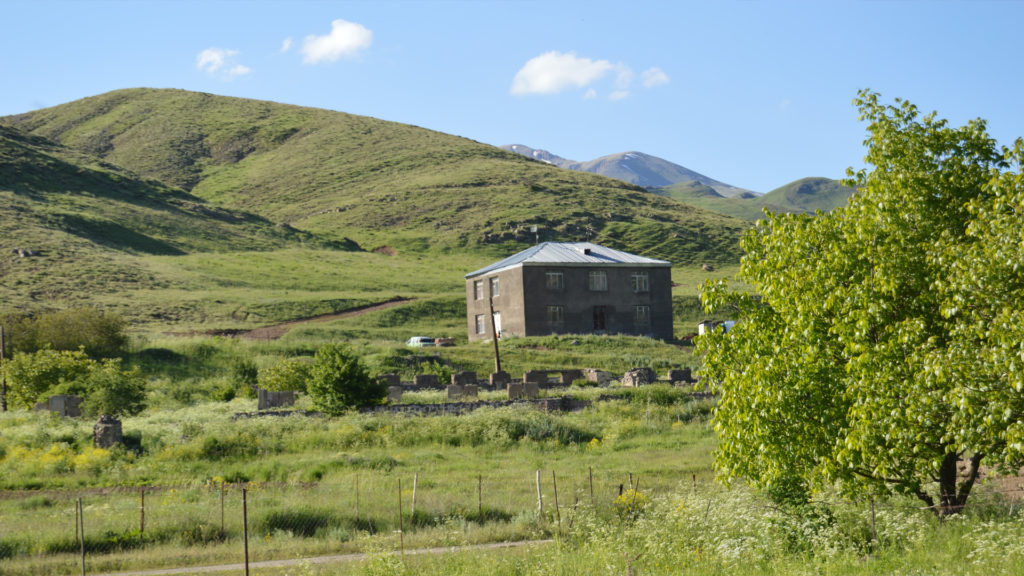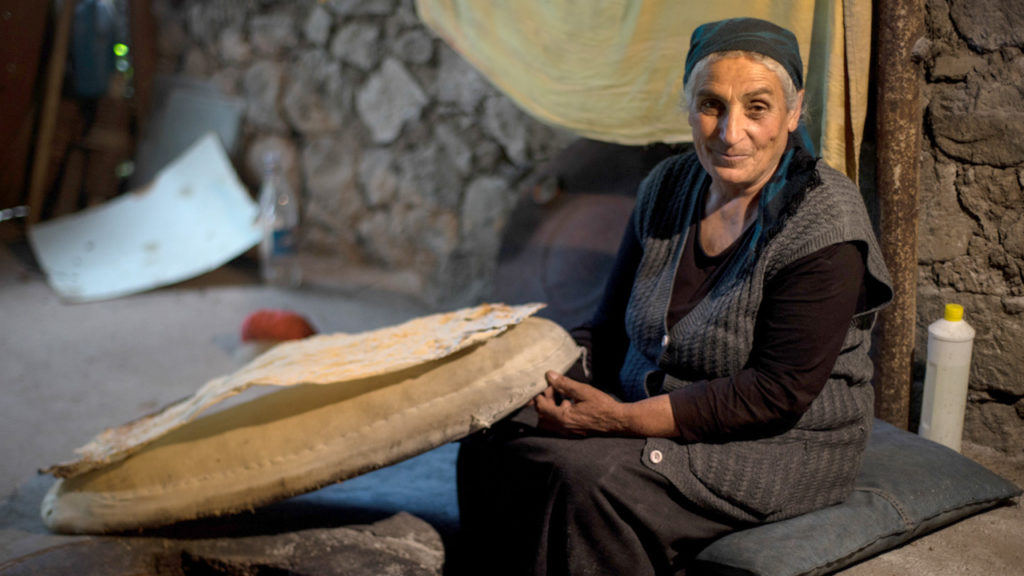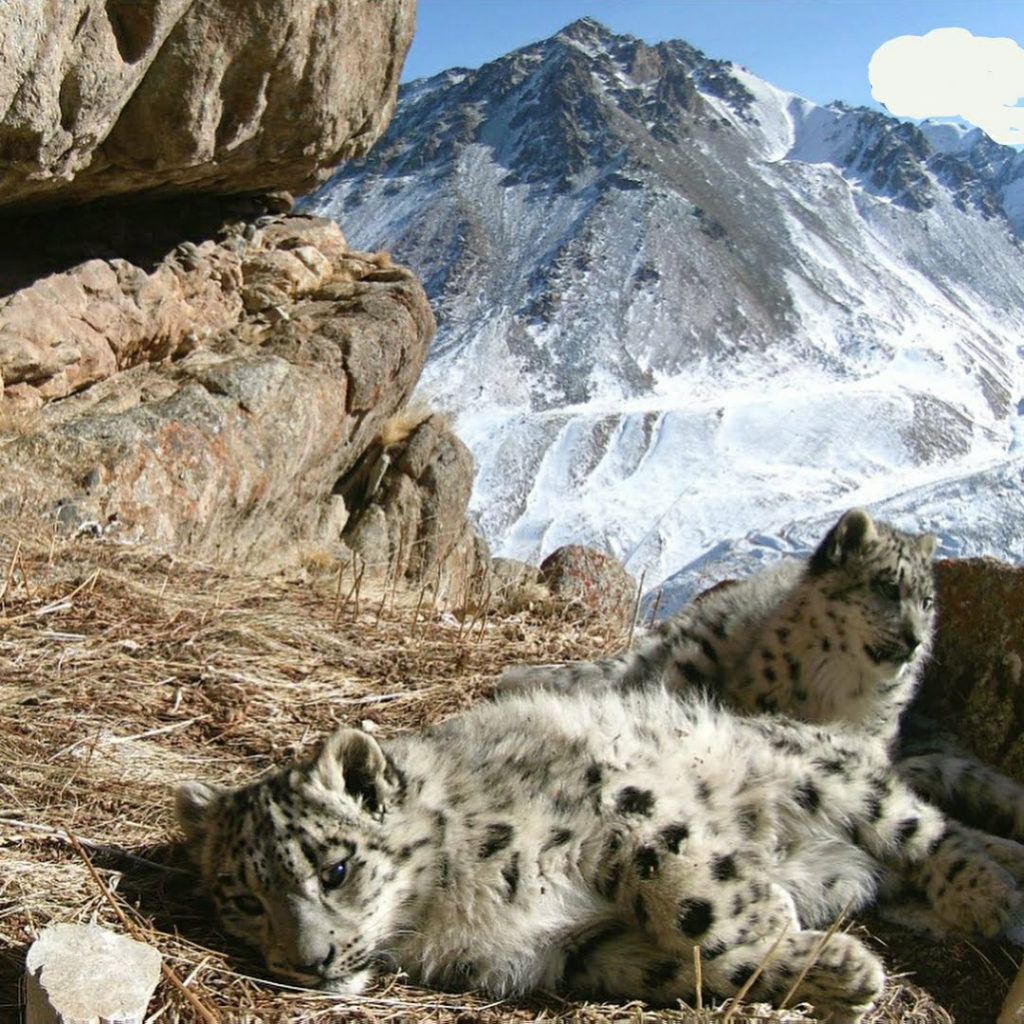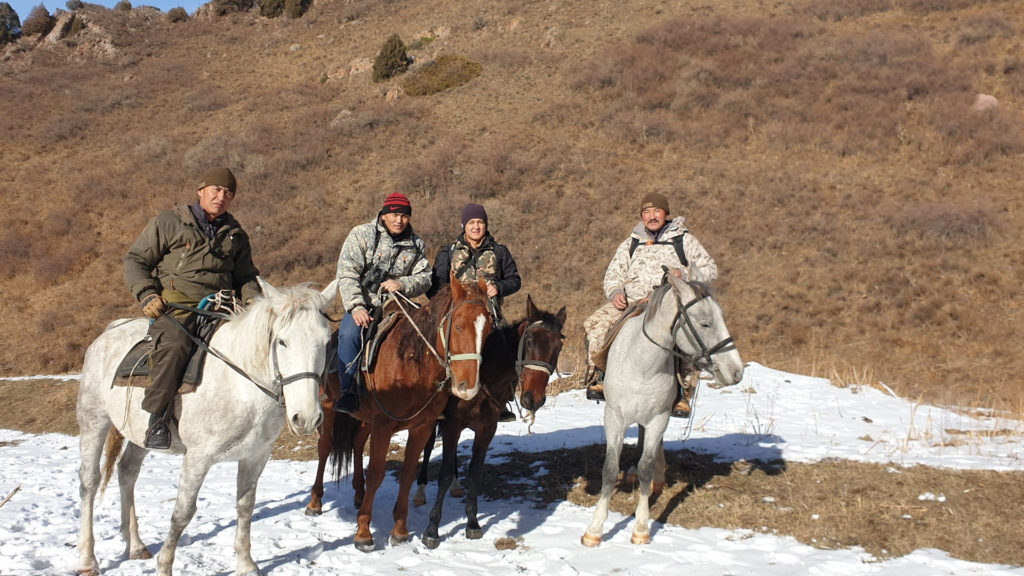
The following descriptions of territories of life across West and Central Asia were collected from the ICCA Consortium membership in the region. Cases have been grouped based on the ecosystems where these ICCAs exist.
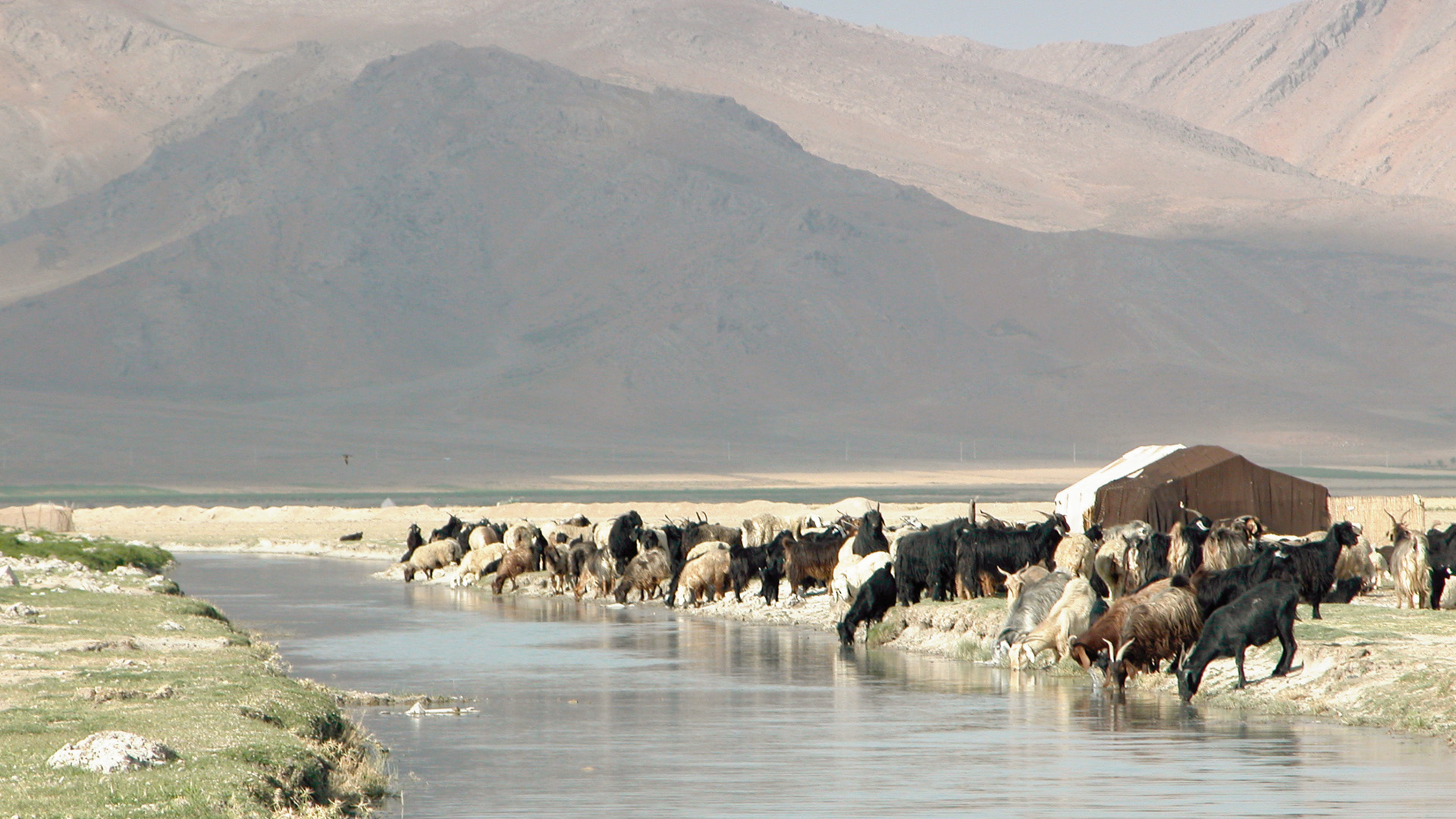
Qashqai Tribal Confederacy. Photo: CENESTA
1
Mobile pastoralists of Iran
Tribal territories and migration routes of the Mobile Pastoralists of Iran: limited availability of forage resources requires seasonal migration of livestock
Source: Taghi Farvar (cf. Farvar 2003), Ali Razmkhah, CENESTA
Location: Southern, Central, Northern and North-Western Iran
Practice(s): Nomadic pastoralism
There are almost 700 tribal formations in Iran, consisting of some 100 tribal confederacies and 600 independent tribes – including, among others, Qashqai, Shahsevan, Sangsari, Bakhtiari, Abolhassani, Abarsej, Chadorneshin, Zafaranlu, Gorji and Lorestan tribal confederacies, as well as Chodari, Baluchi and Rabi’i independent tribes, each of which has their own territories of life, i.e., migration realms (UNINOMAD n.d.). Generally, each tribal confederacy consists of social groups nested within one another, i.e., tribal confederacy (el or i:l), which is a union of several tribes and is the highest social structure of nomadic pastoralists; each tribe (tayfa or tayefeh) consisting of several subtribes (tira or tireh), which in turn consist of several clans (Kheel, bonku, göbak, owlaad, hu:z, or tash), and each clan consisting of several oba or maal, the smallest unit of nomad’s social structure, i.e. the nomadic camp with 5-10 households (tents). This smallest unit migrates and manages natural resources together.
Each tribal confederacy has its own terms denoting the elements of its social structure (Naghizadeh et al. 2012).
For example, the Sangsari Tribal Confederacy consists of 46 tribes, 95 families (tireh), 120 kheyl and 739 households. The tribes and tribal confederacies govern themselves according to customary law and have Elder Councils and/or so-called White Beard Councils. Some of the tribal confederacies have formal state registration and Sustainable Livelihood Councils.
Social solidarity and coherence: Creating strong social organisations of nomads and camel herders of Iran
Since 2003, strong efforts have been made to promote ICCAs through solidarity among the mobile pastoralists and local communities of Iran. CENESTA has assisted 6 Tribal Confederacies (Qashqai, Bakhtiari, Shahsevan, Sangsari, Abolhasani and Abarsaj) and a number of independent tribes in different territories of indigenous peoples to establish their own social organisation (registered CBOs) at tribal confederacy, tribe and subtribe levels in the form of Council of Elders and of Sustainable Livelihood Funds of Nomadic Pastoralists.
The tribal confederacies recognize the importance of establishing a united legal identity at the national level to represent their common interests. That is why they established the Union of Indigenous Nomadic Tribes of Iran (UNINOMAD) and the Union of Indigenous Camel Herders of Iran (UNICAMEL). These formal entities representing the interests of mobile pastoralists interact with policymakers and government authorities for promoting better understanding, recognition and support of ICCAs – territories of life in the country.
The nomadic tribes possess camels, horses, sheep, goats, donkeys and cattle. The memories and documentation available testify that these tribal formations have been highly careful to conserve nature. Their livelihood practices are congruent with the three main conservation features: preservation, sustainable use, and restoration. For example, wildlife is considered a natural heritage of the tribes and they are allowed a fair share of water and natural resources. For example, Abolhassani Tribal Confederacy dedicates its water resources to its livestock at midday and wildlife at dawn and dusk. The Lazor people and many others lay bundles of feed on snow from which gazelles, wild goats and wild sheep may eat and survive the harsh winters. Most nomads consider that some portions of their livestock are meant to feed predators such as leopards and cheetahs. They consider this to be zakat, a religious tithe.
Most livelihood strategies are consistent with environmental processes and have been passed down from generation to generation. For example, tribal elders still recall how flocks of gazelles and deer would co-migrate with their flocks of domestic livestock during the day and mix in with their herds freely, separating from them only at night to sleep in their own safety and calm. Most tribal peoples would learn from their elders not to hunt female and young wildlife, especially during the mating seasons. In the 1950s, the elders of the Bahmaei Tribal Confederacy would send out scouts before spring migration to the intended summering grounds to bring back news of ecological, climatological and social indicators, upon analysis of which they would estimate quite accurately the carrying capacity of each micro-territory to which they intended to migrate. They would then estimate the number of women allowed to migrate to these territories, as women in this region were responsible for processing dairy products. It took one woman to process around 35 heads of lactating goats and sheep.
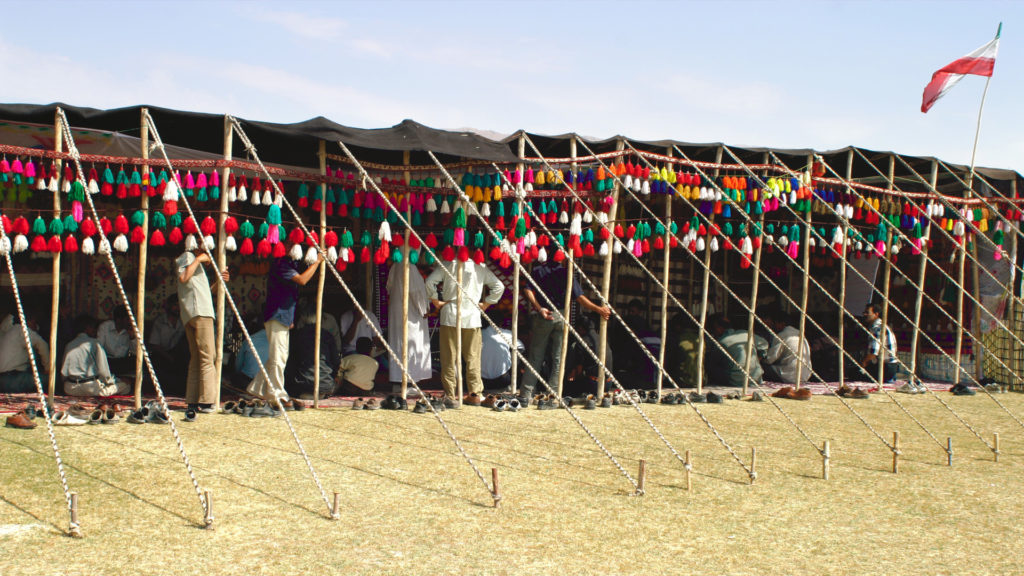
The children would herd the lambs and kids, women would herd the nursing animals nearby, and men would take care of herding the dry animals (males and dry females) much further afield. Any leftover people would be on a ‘waiting list’ of nomads who would stay behind and do other chores for the tribe, such as cultivating wheat and barley for human and livestock use. If the weather and carrying capacity improved the next season, the nomads on the waiting list would gather up a herd of livestock and migrate. Otherwise, they would eventually migrate out of the system and settle in towns and villages near and far.
The nomadic tribes use several approaches and techniques for the conservation of natural resources,
such as:
- Seasonal migration to prevent overgrazing;
- Exclusion of all except approved tribal peoples who are permitted to migrate;
- Declaration of certain rangelands, forests and wetlands as conservation areas or qoroqs;
- Re-seeding degraded rangelands with ingenious techniques such as women collecting desirable wild seeds in animal skins that are then pierced and hung under the belly of the lead goats of their flocks. The stored seeds disperse across the rangelands, get immediately ploughed into the soil, and are fertilised by animal droppings. With the first rains, the seeds sprout, driving the ecological restoration of rangelands.
More recently the tribal confederacies have taken up participatory GIS methods to map their pastures and migration routes, which has been helping to protect and sustain their territories of life.
Tribal confederacies in Iran have a strong social organisation, deep historic ties to their territories of life, and their management and governance institutions and practices contribute to the conservation of nature. These migratory routes and pastures can be considered to be emblematic, as they show a way in which ICCAs can be successfully governed and sustained.
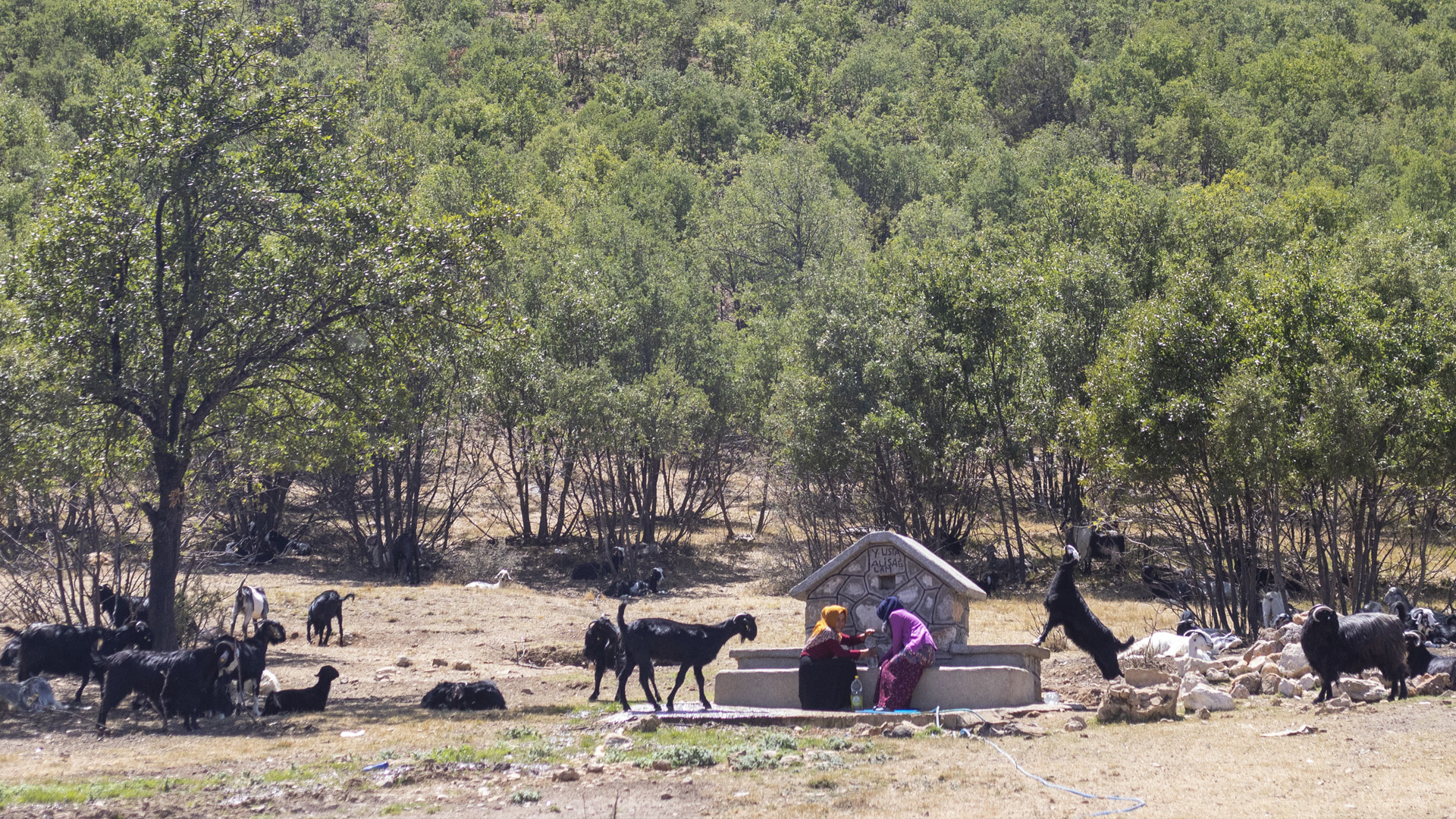
Sarıkeçili Yörüks from the Taurus Mountains of Turkey. Photo: Engin Yılmaz
2
Sarıkeçili Yörüks from the Taurus Mountains of Turkey
Nomadic pastoralism under pressure: institutional and legal barriers undermine traditional ecological knowledge, identity, and livelihoods
Source: Engin Yılmaz, Yolda Initiative
Location: Mediterranean shores & Taurus Mountains & Steppes of Central Anatolia
Community: Sarıkeçili Yörüks
Practice(s): Nomadic pastoralism
In Turkey mobile pastoralism (nomadic pastoralism and transhumance) is a major traditional practice that has been shaping the country’s landscapes for thousands of years. Despite the fact that mobile pastoralism in Turkey has suffered, there are still thousands of nomadic pastoralist families, particularly among the Yörük and Koçer communities, who still maintain wisdom, a keen knowledge of the landscapes in which they move, emerging from thousands of years of accumulated experiences. The practice exists in many different forms in Turkey. It has much to offer not only for conserving nature but also for the cultural diversity and heritage of the country.
Sarıkeçili Yörüks, a nomadic pastoralist community, currently with more than 150 families who have been maintaining this livelihood for centuries in Turkey, is a significant case. Migrating hundreds of kilometres on foot with their goats between their wintering site at the shores of the Mediterranean and their summering sites in Central Anatolia beyond the Taurus Mountains, they conserve and enrich nature, contribute to local economies, produce high quality and healthy food, and contribute to the fight against climate change. The area they cover includes very diverse ecosystems such as rangelands, maquis, and shrublands, Mediterranean forests, alpine ecosystems, riverine systems, coastal and inner wetlands, steppe ecosystems, etc.
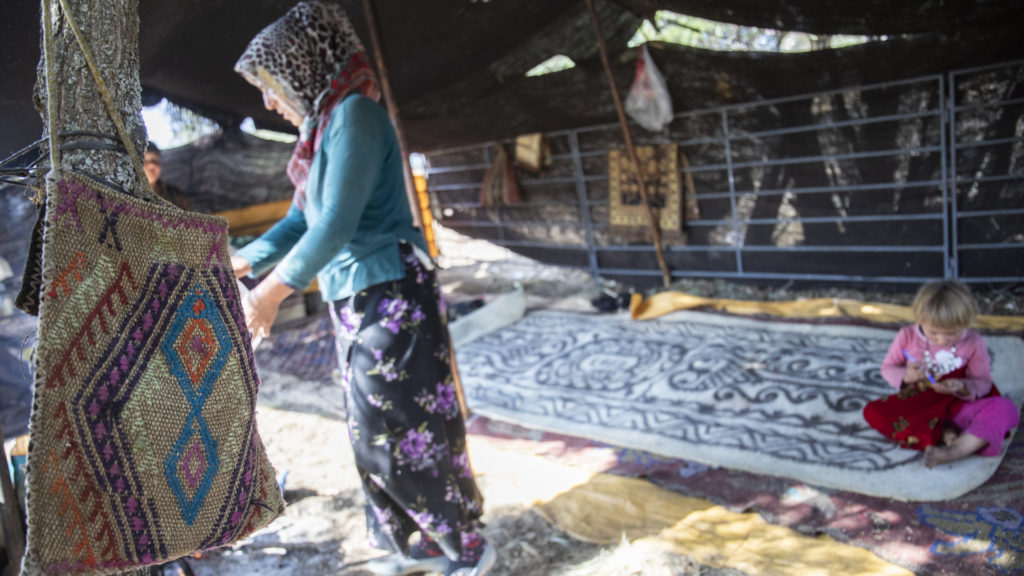
Sarıkeçili Yörüks have played a critical role as a major agent in the evolution and maintenance of these varied ecosystems, including with their migration routes functioning as ecological corridors ensuring connectivity between them and thus avoiding fragmentation. They play an indispensable role for nature also as they generate spatial heterogeneity, increase plant species diversity, promote diversity of species of different taxonomic groups, disperse plant seeds, contribute to soil nutrient cycling, prevent water pollution, prevent wildfires, and increase overall ecosystem resilience.
Like other nomadic pastoralist communities in Turkey, their culture and practices are based on the understanding that their survival and that of future generations depends on nature. Thus, they have a deep sense of responsibility and connectedness to the landscapes they manage. Their practices, strategies, social institutions, and evolving knowledge, are all based on constant interaction with the environment and ecological processes.
Yet since the end of the 17th century, but particularly in the last two centuries, nomadic pastoralist communities have suffered from historic injustices in Turkey. These include dispossession (either by expropriation or privatisation) of the rangelands and migration routes they use, thus denial of their rights (including usufruct rights) to their traditional lands and resources, and prevention from using them. Additionally, due to the conversion of rangelands to other land use types, particularly agriculture, the total area of rangelands reduced by over 70% from 44.2 million hectares in 1940 to 12.4 million hectares in 2000.
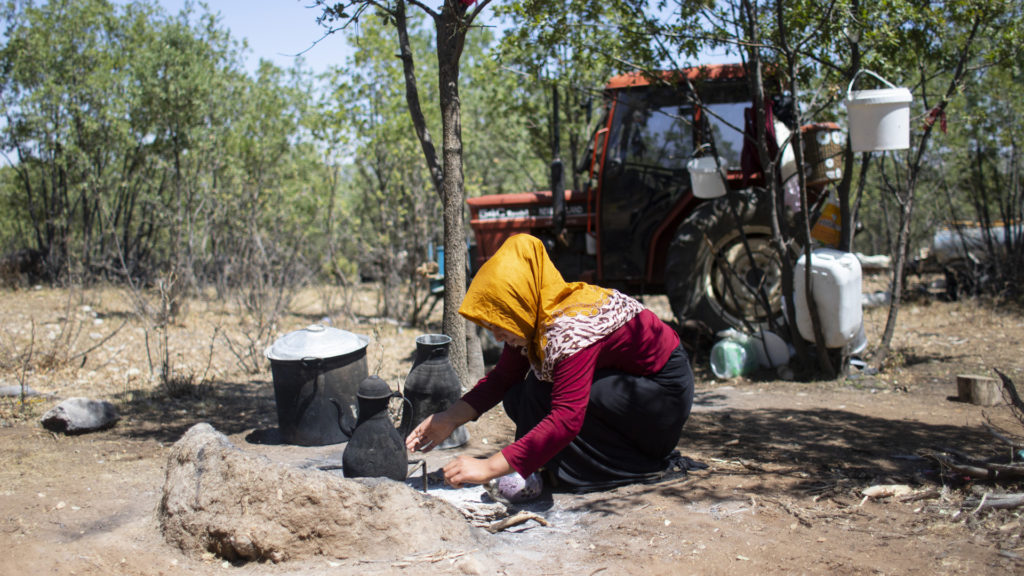
Lacking access to institutionalised power they became politically and economically marginalised, and even found themselves criminalised for maintaining their will to move. Similar injustices to these communities have been and continue to be caused also in the name of nature conservation. Without the recourse to maintain the state of their traditional livelihoods, most of the mobile pastoralist communities have abandoned the practice completely, and the majority of those remaining have experienced loss of their traditional systems as integrated and distinct communities.
Sarıkeçili Yörüks are among those very few communities which still conserve their identity as a community despite all these hardships. Thus, in addition to their rich traditional ecological knowledge, like all mobile pastoralists, they also still hold many traditional institutions as a community. This is also reflected in their will and capability to advocate and fight for their own rights. Sarıkeçili Yörüks Association which is led by Ms. Pervin Çoban Savran is performing this role for the rights of Sarıkeçili Yörüks in Turkey.
Regarding land tenure, Sarıkeçili Yörüks, in general, utilise public lands (rangelands and forests) in Turkey. While certain internal governance mechanisms exist amongst these communities in terms of respecting each other’s traditional rights to access and use these lands and resources and in terms of managing these commons, none of these are recognized or secured by the state. Thus, to this day they still do not have recognized and secured rights in terms of governance of these lands.
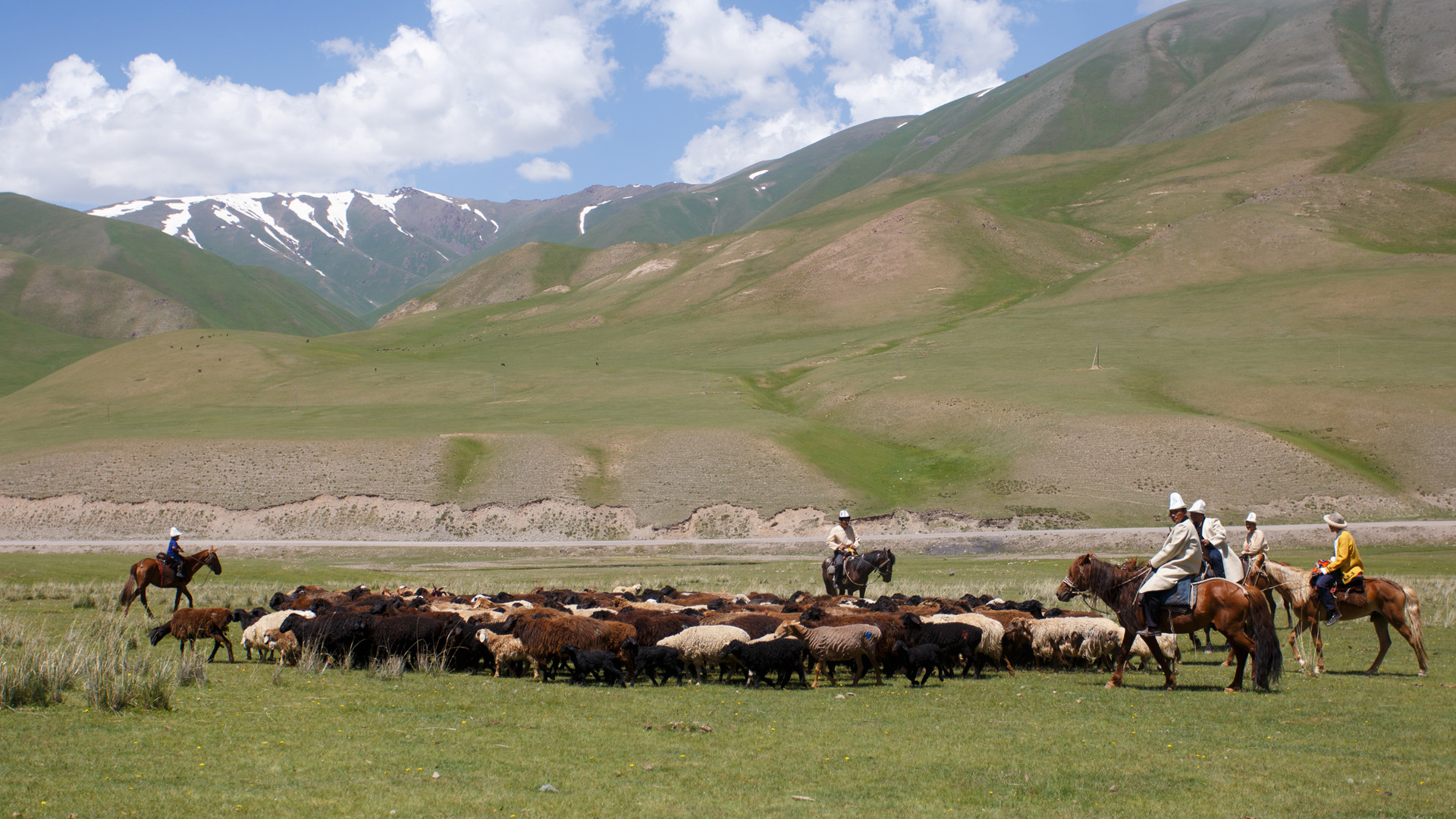
Pastoralism in Tianshan Mountains of Kyrgyzstan. Photo: Institute for Sustainable Development Strategy
3
Pastoralism in the Tianshan Mountains of Kyrgyzstan
Halting pasture degradation: reviving TEK for sustainable pasture management
Source: Aibek Samakov, ICCA Honorary Member
Location: Naryn province, Kyrgyzstan
Community: Cholpon village
Practice(s): Pastoralism
Historically, the Kyrgyz tribes migrated seasonally between different valleys and mountainous areas (Undeland 2005). During the Soviet era, the management of pastures was centralised and carried out by stateowned farms (Shigaeva et al. 2016). After the collapse of the Soviet Union in 1991, the approaches to pasture management diverged in the Central Asian countries, which had a different effect on herd mobility and pasture access rights (Robinson et al. 2012). Due to costs associated with moving the herds, the remote pastures are often under grazed, whereas overgrazing on pastures near settlements contributes to their degradation. In many Central Asian countries pastures are either private
property (Kazakhstan) or state property (Turkmenistan), whereas in Kyrgyzstan an individual pasture leasing system was in place between 2002 and 2009, after which the Pasture Code was adopted in 2009 to designate pastures as common property.
The Pasture Code stipulates the creation of local pasture committees that govern and manage the pastures taking into account both the livelihood interests of local communities and nature conservation needs. Although pasture committees were envisioned to be functioning “bottom-up”, i.e. through democratic and decentralised local institutions, some of these pasture committees instead became institutions “that aim primarily to control the use of resources, exclude some people from decisionmaking,
or impose taxation” (Shigaeva et al. 2016).
Although some of the pasture committees have been criticised for focusing solely on fee collection, there are a number of pasture committees that are trying to revive traditional methods of pasture management
and integrate innovative approaches. For example, in Cholpon village, where the main livelihood is pastoralism, a pasture committee was established in 2009. Due to increasing anthropogenic pressures on pastures, in part due to the growing livestock numbers, pasture degradation had occurred. However, in the last 5 years the pasture committee has been implementing a participatory process of documenting traditional pasture management strategies and collecting traditional ecological knowledge. One of the aims of the pasture committee is to assist herders to follow traditional seasonal migration patterns and use traditional indicators to identify the biophysical conditions of pastures and their carrying capacity. The pasture committee has been encouraging pasture users to set aside some areas for recovery. While in 2015 only 30 ha were set aside as local informal grassland (forage) reserves, by 2019 the area had increased substantially to 9,000 ha.
Historically, the pastures were managed by local tribes, which followed seasonal migration patterns. The local governance institutions were replaced by the centralised decision-making set-up during the Soviet
era and by individual pasture ownership in the 1990s and early 2000s. Since the adoption of the Pasture Code in 2009, local communities have regained their right to govern their pastures. However, the current pasture management institutions do not always demonstrate all of the characteristics of well defined, fully functioning ICCAs.
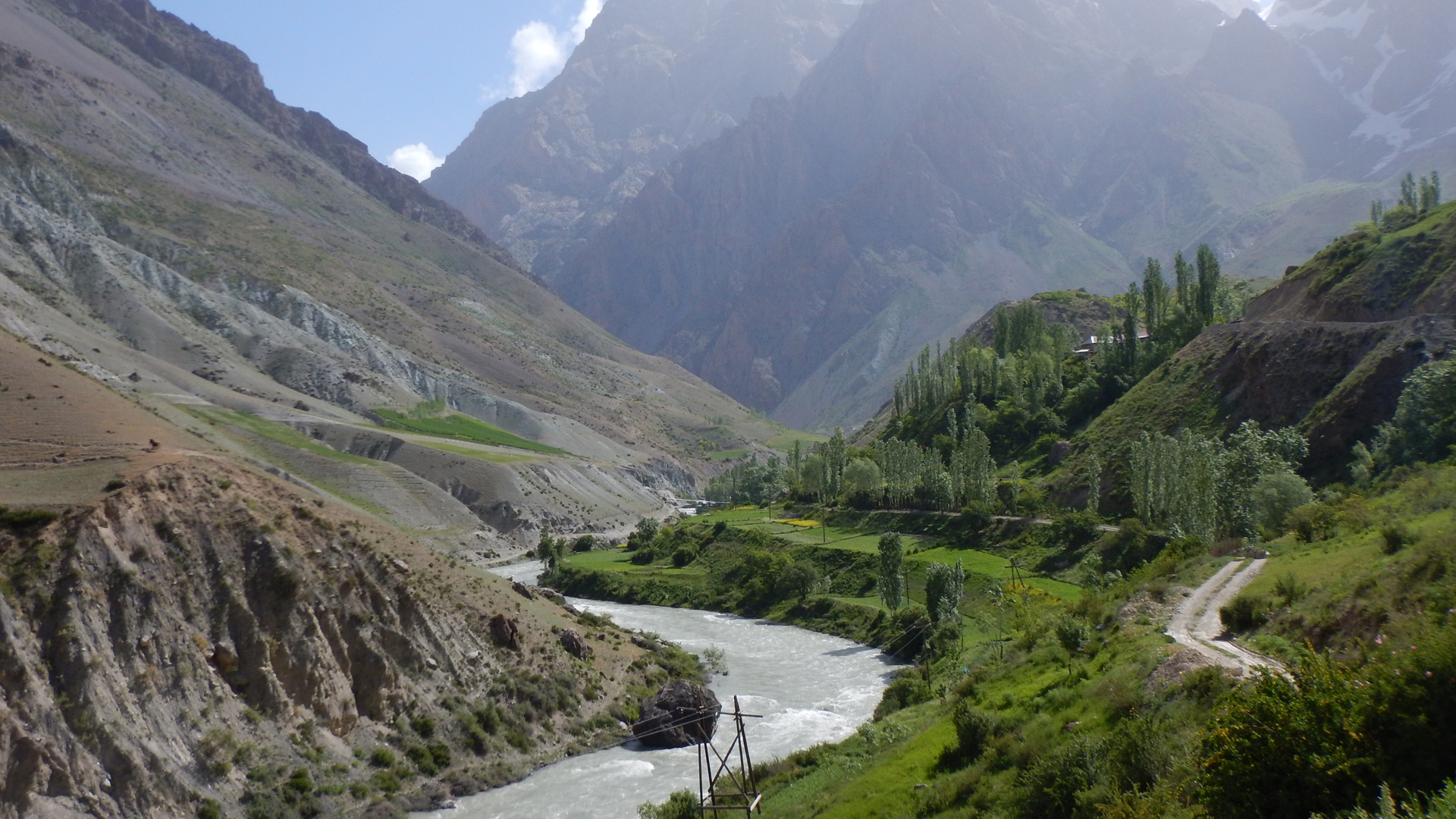
Yagnob, river and mountains. Photo: Marc Foggin
4
Mountain farming in Yagnob Valley of Tajikistan
New national park on ICCA: Yagnobi people and farming on steep mountain slopes
Source: Adapted from Journey to Sodiana’s heirs and other notes by Anvar J. Buzurukov, with additional
inputs by Marc Foggin (Plateau Perspectives) and Abduvohid Safarov (Anahita Organisation)
Location: Yagnob valley in Sugd province, Tajikistan
Community: Yagnobi people
Practice(s): Mountain farming and agropastoralism
In northern Tajikistan, the Yagnobi people are little known, yet they hold great international historic interest, e.g. as sole descendants of the Sogdian Empire, renowned from long ago alongside the Scythian Empire. In recent times, however, Yagnobi people have suffered terribly and now fewer than 650 people remain in their homeland, the Yagnob Valley. Much needs to be done in order to preserve their unique language and culture (this being one of their foremost concerns, repeatedly expressed). In May 2019, the whole valley was announced as Tajikistan’s newest National Park – which brings with it potential pitfalls but also could be leveraged as a tool or mechanism with legal strength working in favour of the local communities through co-management approaches to conservation.[14]
The creation of the Yagnob National Park, Tajikistan in May 2019 should go a long way in helping to relieve the pressures of poverty and natural degradation in this fascinating land of ancient traditions and high mountains. Yagnob is a 60 km long-isolated narrow river valley, separating the Zeravshan and Hissar Ranges. It is occupied by the indigenous Yagnobi people who live primarily in Tajikistan and speak an ancient East Iranian language related to Sogdian. About 50% of the current population of Yagnob people are Yagnobi-speakers, whereas the other half communicate either primarily or exclusively in the Tajik language.
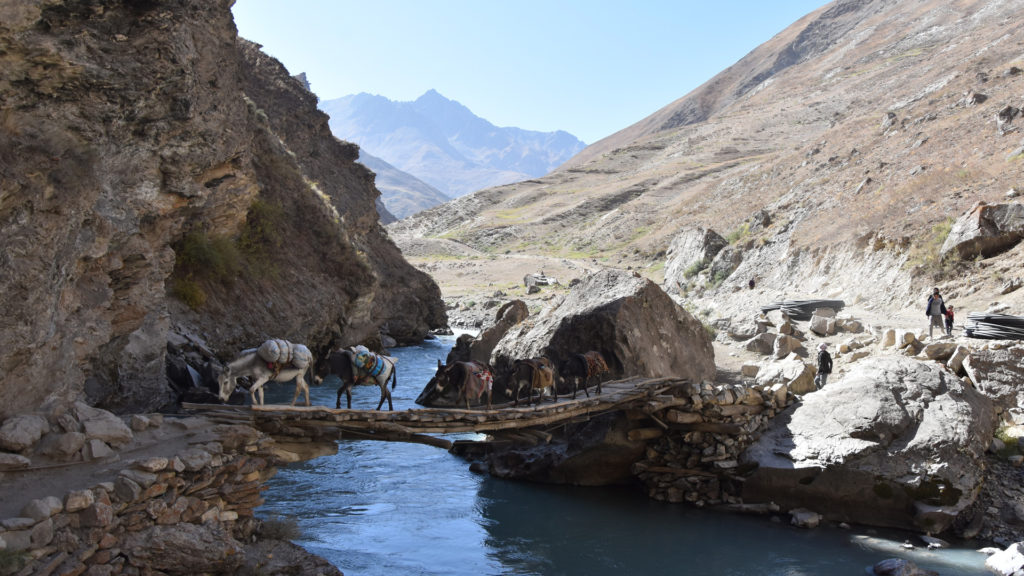
In 1969-70, around 4,000 Yagnobians were forcibly moved to cotton-growing areas in the lowlands, where many died due to the hot weather and hard labour. Now, around 18,000 Yagnobis live in different parts of Tajikistan. In more recent years, some families have returned to the valley and now 638 Yagnobi people in the valley live in extremely challenging economic and environmental conditions. Yagnobi community lifestyles and land-use patterns still generally follow the older traditions.
Primarily based on affinities with ancient Sogdian and Yagnobi languages, valley residents identify with Sogdiana, for which earliest references date back to late VI – early V century BC. Alongside Bactria and Khoresm, Sogdiana was the most ancient state formation (a society represented by the castes of priests, warriors, farmers, and slaves) in Central Asia. Today, the people of Yagnob Valley still face many social and environmental challenges: earthquakes, avalanches, landslides, land degradation, long winters, isolation, poverty, as well as competition with external resource users who move seasonally into the (relatively depopulated) remote valley. For many centuries before the construction of the road, the Yagnobi people have lived and still live in isolation for 8 months each year, with snow and avalanche hazards preventing contact with the outside world. In cases of emergency in winter, people would use the frozen riverbed as an access route, even though this is fraught with many risks.
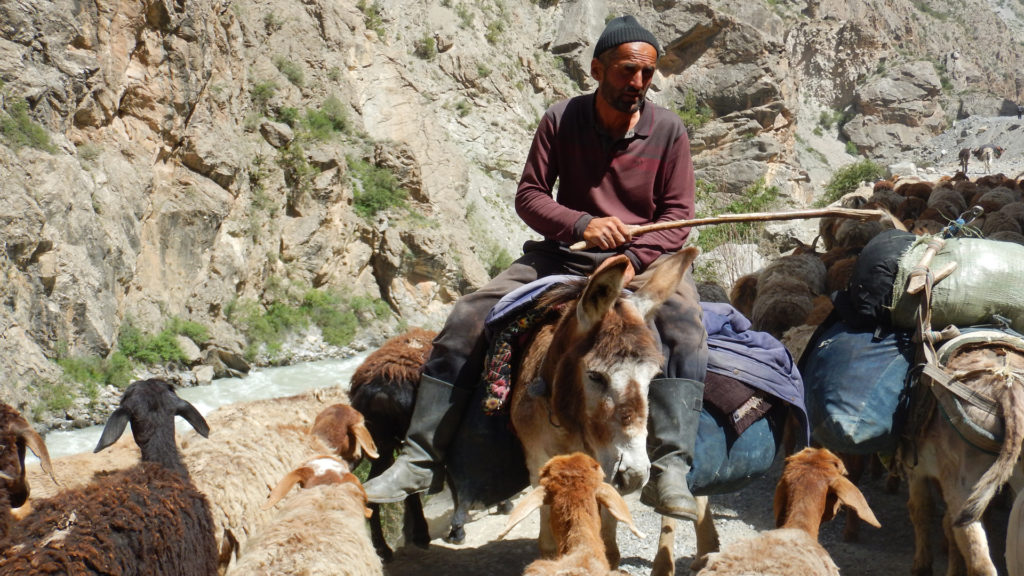
The Yagnobi people also have many special skills, such as construction of complex irrigation systems and techniques for terracing the very steep mountain slopes. The highlanders grow wheat, barley and potatoes that can potentially produce high yields in this area. Livestock are also raised in the valley, with animal husbandry contributing to local household economies, though in some areas also causing severe erosion, impoverishing the fragile mountain soils.
Traditions that support unique mountain agrobiodiversity are being studied with an aim to support and revive sustainable and enriching socioeconomic practices. New community-friendly enterprises consistent with the conservation goals of the new national park also are being introduced and adapted with ongoing participatory dialogues, such as community ecotourism. Building on community pride – in Yagnobi culture and especially the unique Yagnob language, still spoken widely in the middle and upper reaches of the valley as mother tongue – the national park has been founded with the aim to protect not only the rich mountain biodiversity but also to protect and strengthen local culture with meaningful engagement through approaches such as community co-management of the protected area.
Yagnob National Park was established by the Government of the Republic of Tajikistan in May 2019 with the following aims: (i) to protect nature, (ii) to conduct scientific research, and (iii) to promote tourism and other forms of sustainable use of natural resources.
Territories of life of the Yagnobi people were under pressure especially due to intrusions by herders from other regions. These intrusions happened without any consultations or permission from the local residents. The establishment of the national park plans, as one of its primary intents, to re-invest at least some level of local decision-making authority (and other forms of involvement) to local communities; it was set up to serve as a protective mechanism for them against intrusions by outsiders. Thus, this is one instance when a formal protected area status has the potential to help defend local ICCAs – territories of life.
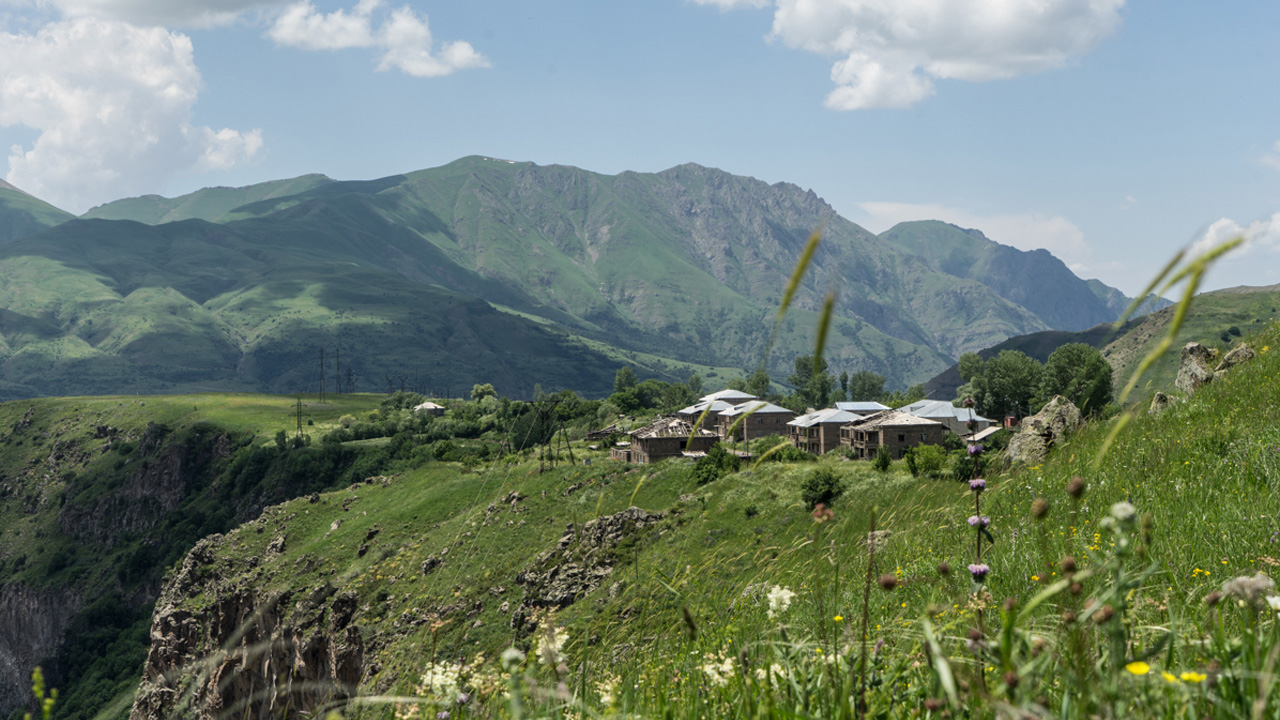
Ecovillages in Armenia. Photos: Ruben Khachatryan
5
Ecovillages in Armenia
United by the common cause: Partnership between CSO and local communities for conservation
Source: Ruben Khachatryan (FPWC)
Location: Armenia
Community: Vardahovit, Goghtanik, Gnishik.
Practice(s): Community-based conservation
The Foundation for the Preservation of Wildlife and Cultural Assets (FPWC) and its daughter organisation, SunChild, have been working with local communities and the local governments to transform traditional villages into regenerative resilient communities. The process guides communities to identify opportunities for positive change in their social, cultural, ecological and economic practices, and to develop a custom palette of solutions for:
- Catalyzing community-led change
- Eradicating poverty
- Restoring natural environments
- Achieving climate resilience
FPWC has been working closely with several communities such as Vardahovit (population of 265 people), Goghtanik (population of 200), Gnishik (population of 199). Several years ago, it was planned by government that the communal lands of Vardahovit community were to be given over for gold mining. As a result of the community’s collaboration with FPWC, the community rejected the mining proposal and decided instead to dedicate 1,000 ha of land for wildlife conservation purposes. Later the FPWC rented about 4,000 ha of adjacent land to render the community conserved area even more viable. There is also an educational community created near Vardahovit, situated in the grounds of the 7th-century Arates Monastery.
Gnishik community (including Mozrov and Gnishik villages) is also striving to become an ecovillage with a strong conservation component. The village has a unique history: the population has been displaced several times, but they have preserved their links to their lands. Gnishik has an amazingly high biodiversity with a great potential for community-based research on local flora and fauna. In order to change the status of land ownership of the targeted communities from community-owned land to the status of ‘Specially protected areas’ – or territories of life – FPWC is working closely with the Armenian government and local administrative bodies to prepare the prerequisites for the desired change. In this regard, Gnishik is observed to be the first community to undergo such land status change.
According to the legislation of land ownership in Armenia, the lands in the community belong to the communities directly and are managed and administered by the community head and council according to national laws and regulations. The partner communities, in cooperation with FPWC, are promoting the changes in land legislation that will allow formal recognition of ICCAs to protect their land from further exploitation as well as to positively benefit members of the local communities, including their relationships with the land and wildlife.
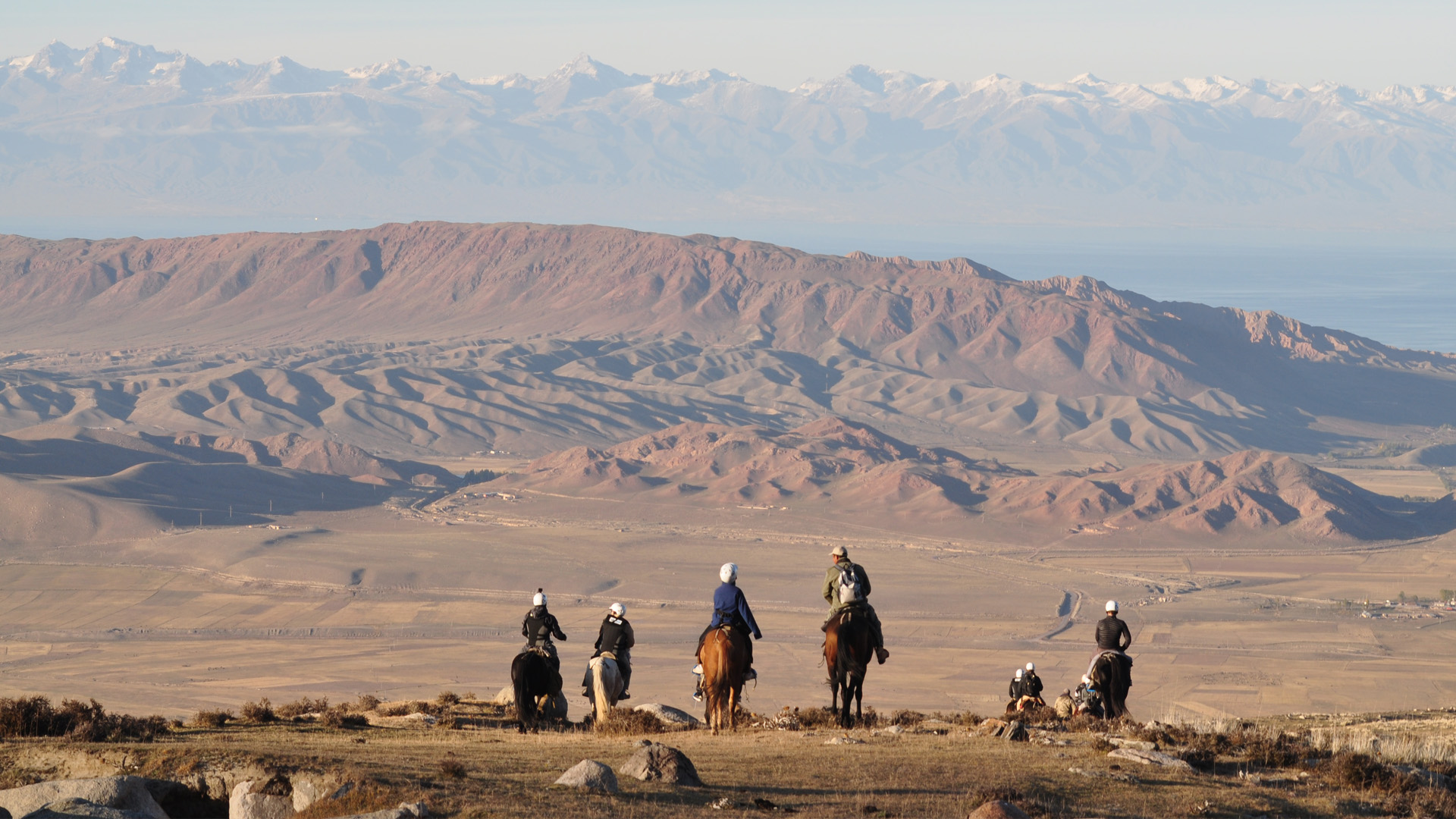
Ecovillages in Armenia. Photos: Ruben Khachatryan
6
Baiboosun community reserve in Kyrgyzstan
When local communities take conservation into their own hands: Community reserves in Kyrgyzstan
Source: Aibek Samakov, ICCA Honorary Member
Location: Ysyk-Köl (Issyk-kul) Province, Kyrgyzstan
Community: Various local mountain herding communities
Practice(s): Locally-driven nature conservation measures
Baiboosun is a gorge in the Tong district of Ysyk-Köl Province, Kyrgyzstan. In 2019, the local community formally established a community-conserved area in the vicinity of their village to protect wildlife from illegal trophy hunting from outside the community. The main incentive for the communities to take up nature conservation was the observed significant loss of local biodiversity. The elders and middle-aged members of the community note that the species of mammals, amphibians and birds that they used to see while growing up are no longer there. They are reminiscent of the positive emotions that seeing frogs, hedgehogs, porcupines, foxes, ibex and argali or hearing birds and frogs gave them. Many community
members identify such encounters with wildlife as being a highlight of their childhood and youth, and they want to ensure that their own children and grandchildren may also be able to experience the same thing.[15]
However, due to uncontrolled hunting, often carried out by those from outside the community, the number of wild species has drastically declined in recent decades. Local people noted that their lands started to appear ‘empty’ and ‘devoid of any life’ – this is why the community decided to take action to protect their lands. The community members who spearheaded the establishment of the community conservancy came from different backgrounds: some were herders, some were teachers, while others used to be poachers but had come to realize that this was ‘their’ nature and ‘their’ territory and now recognized the need to protect and conserve it.
The community needed legal recognition to be able to protect their lands without breaking any laws. They therefore applied to the State Agency for Environmental Protection to create their community conservancy. However, despite national legislation allowing for such community- conserved areas, the mechanism for actually creating one was not yet in place. The community therefore cooperated with national NGOs to support the state agency in developing necessary by-laws to enable the formal creation and recognition of their local community conservancy.
To protect their conserved area, the community has formed patrol and monitoring groups and, in cooperation with CAMP Alatoo Public Foundation and Ilbirs Foundation, has been setting up camera traps to monitor wildlife. They also have been using the monitoring data (photographs) for educational purposes.
Baiboosun is an excellent example of how a local community can take conservation into its own hands and lobby for changes in legislation to promote community-based conservancies. Inspired by the Baiboosun experience, several other communities in the district also have now started to establish their own conserved areas, e.g. around Aidyn Köl Lake and on Ak Bulung peninsula in Ysyk-Köl Lake, which is an important bird nesting area. Jargylchak is the latest community conservancy to be created based on the success of the Baiboosun experience.


